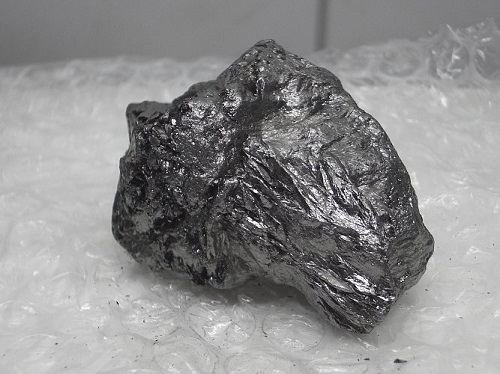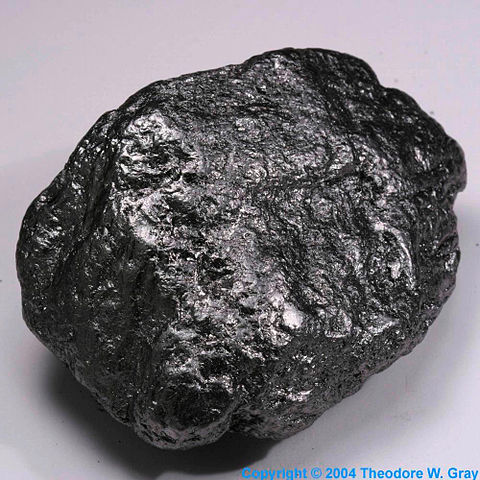Difference Between Graphite and Carbon

Graphite
Graphite vs. Carbon
You may often hear the words “carbon” and “graphite” being said or used in roughly the same context. However, there are certain areas where these two are different, and you must know these variations to avoid misusing the terms.
“Carbon” comes from the Latin word “carbo,” which in English means “charcoal.” It is an element represented by the letter “C” and bearing the atomic number 6 on the periodic table. Carbon is the fourth most abundant element in the world, and it is essential to all living things and their respective processes. All living things contain carbon.
Carbon produces the softest material (graphite) and the hardest substance (diamond). The main difference among carbon substances is in the way the carbon forms in each matter. Carbon atoms bond in chains and rings. In every carbon substance, a unique formation of carbon can be produced.
This element has the special ability to form bonds and compounds by itself, giving it the ability to arrange and rearrange its atoms. Of all the elements, carbon produces the highest number of compounds – around 10 million formations!
Carbon has a wide variety of uses, both as pure carbon and carbon compounds. Primarily, it acts as hydrocarbons in the form of methane gas and crude oil. Crude oil can be distilled into gasoline and kerosene. Both substances serve as fuel for warmth, machines, and many others.
Carbon is also responsible for forming water, a compound necessary for life. It also exists as polymers such as cellulose (in plants) and plastics.

Carbon
On the other hand, graphite is an allotrope of carbon; this means it is a substance made solely of pure carbon. Other allotropes include diamonds, amorphous carbon, and charcoal.
“Graphite” comes from the Greek word “graphein,” which in English means “to write.” Formed when carbon atoms link with each other into sheets, graphite is the most stable form of carbon.
Graphite is soft but very strong. It is resistant to heat and, at the same time, a good heat conductor. Found in metamorphic rocks, it appears as a metallic but opaque substance in a color that ranges from dark grey to black. Graphite is greasy, a characteristic that makes it a good lubricant.
Graphite is also used as a pigment and molding agent in glass manufacturing. Nuclear reactors also use graphite as an electron moderator.
It is not surprising why carbon and graphite are believed to be one and the same; they are closely related, after all. Graphite does come from carbon, and carbon does form into graphite. But taking a closer look at them will make you see that they are not one and the same.
Summary:
- Carbon and graphite are related substances. The main reason for this relationship is that graphite is an allotrope of carbon. An allotrope means that the material is made of a pure substance or element with a few differences in atom formation. Meanwhile, carbon is a registered element. It is a non-metal with a designated atomic number (6) and symbol (“C”).
- Carbon is the most abundant element in the world. It constitutes the majority of life on this planet. Graphite is one of carbon’s pure forms, aside from diamond and amorphous carbon. It is also the softest material.
- Carbon exists in many forms by itself or combined with other elements. Graphite, as a formed substance, cannot form within itself or others.
- In terms of uses, carbon uses easily outnumber those of graphite. Carbon has enormous and important uses in both industrial and biological respects.
- The etymologies of both terms also differ. “Carbon” comes from the Latin word “carbo,” which means “charcoal” – a noun. On the other hand, “graphite” originated from “graphein,” a Greek word meaning “to write” – a verb.
- Differences Between Fraternity And Sorority - January 8, 2014
- Differences Between Lucite and Plastic - January 7, 2014
- Differences Between Oil and Butter - January 6, 2014
Search DifferenceBetween.net :
5 Comments
Leave a Response
References :
[0]https://commons.wikimedia.org/wiki/File:Graphite_crystalline.jpg
[1]https://commons.wikimedia.org/wiki/File:Carbon_piece.jpeg

I’m highly pleased to be informed about all of these…
Thank You
The last sentence in your second paragraph said, “Ninety-six percent of all living things contain carbon.” This is incorrect. All living things contain carbon, because there is no such thing as a non-carbon-based life form.
It also says carbon is the 4th most AND the most abundant element, this whole thing is ludicrous and repeatedly wrong.
We are after all made of Star Dust and that is in my opinion that that has made carbon in its many forms possible?
It does not explain the electrical conductivity of neither one.